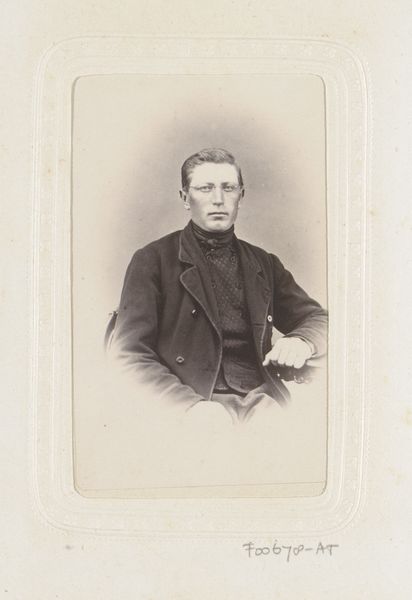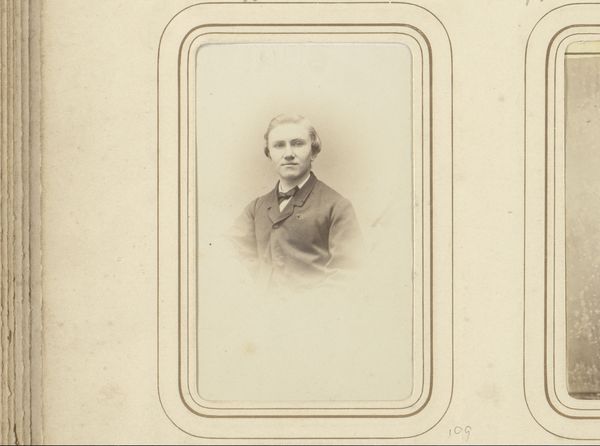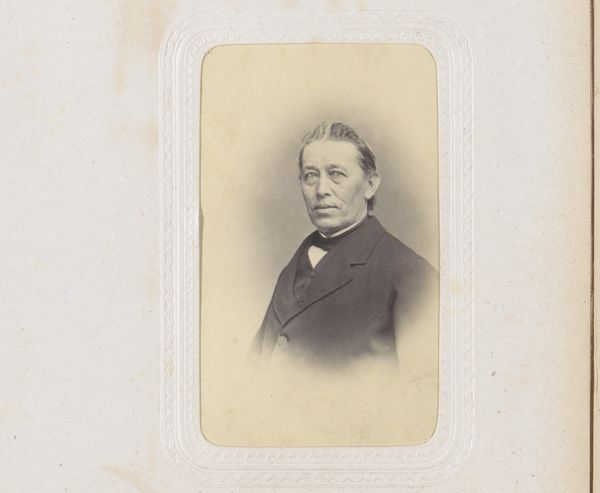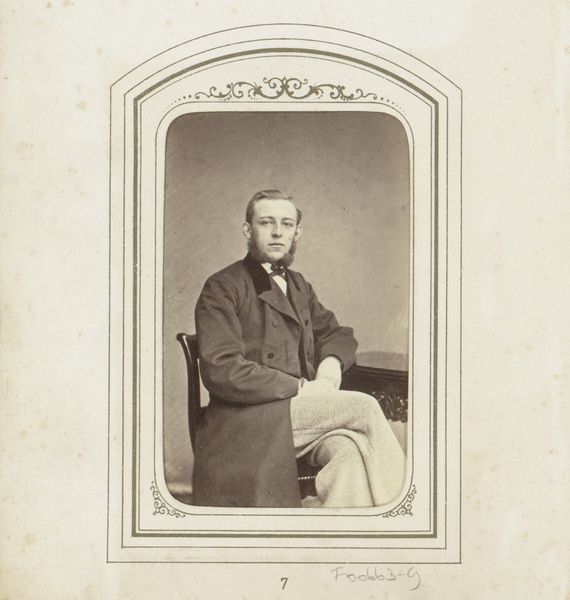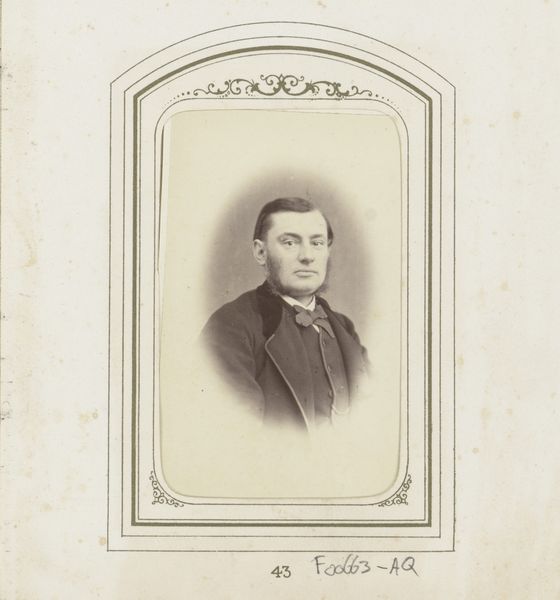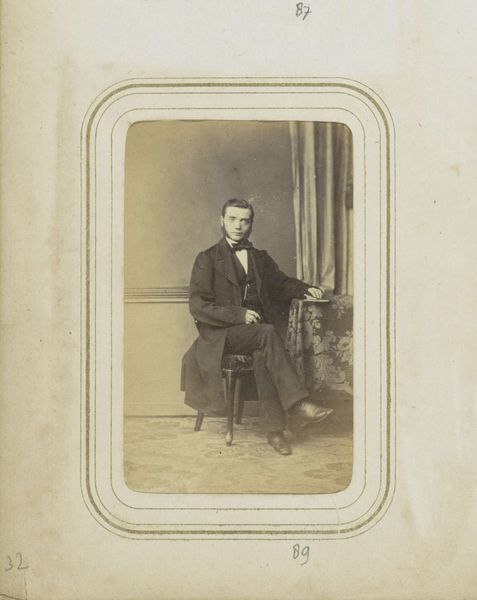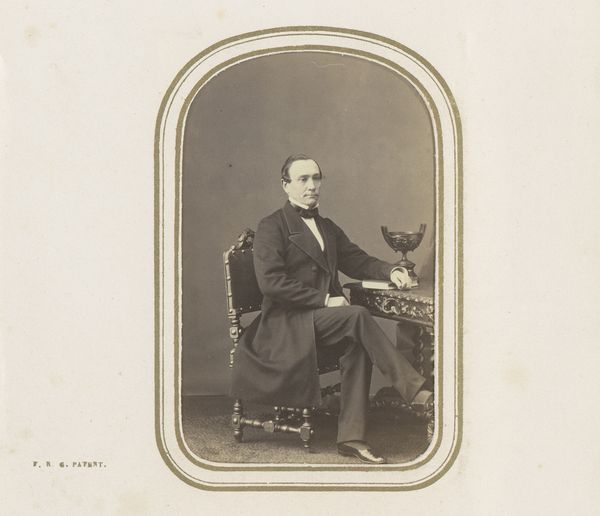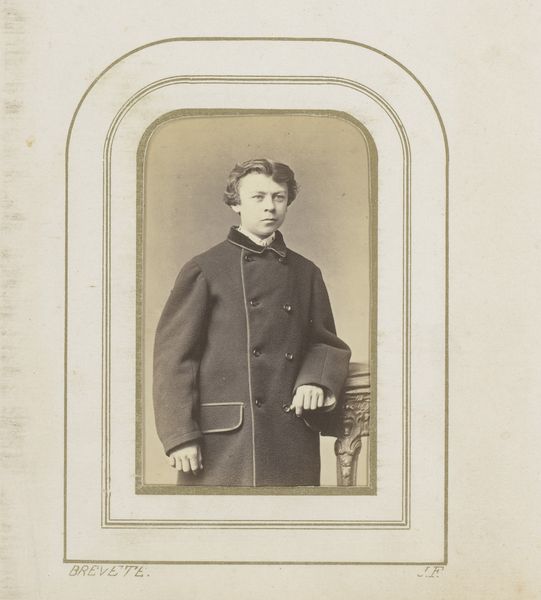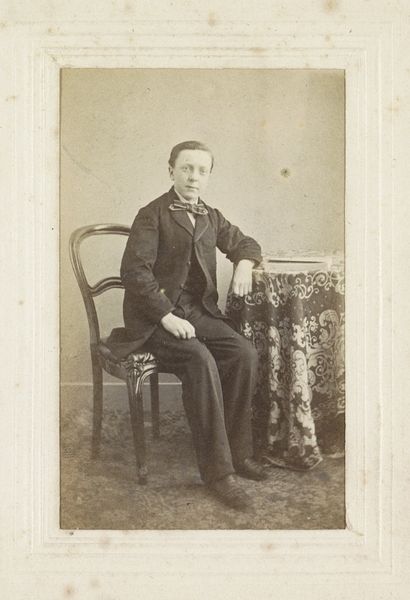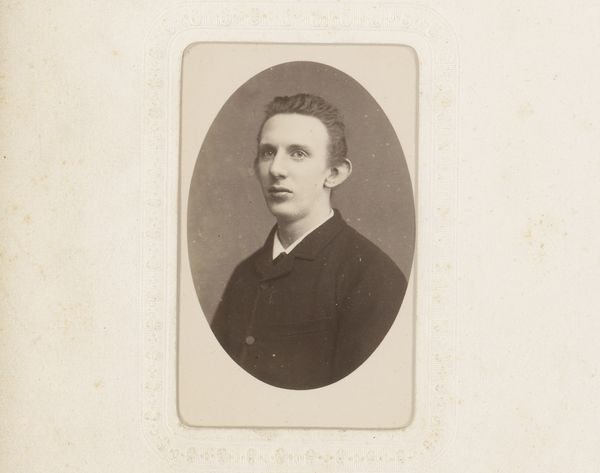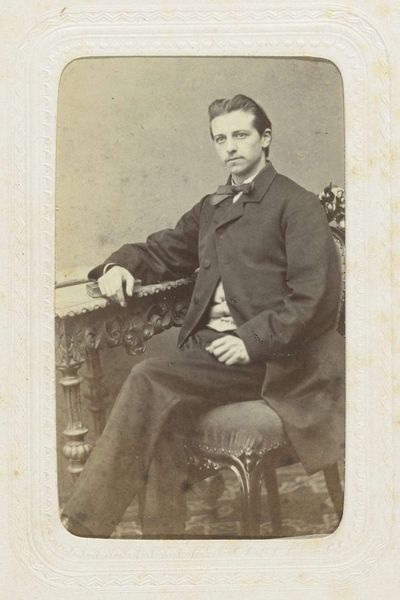
photography, gelatin-silver-print
#
portrait
#
archive photography
#
photography
#
historical photography
#
gelatin-silver-print
#
19th century
#
genre-painting
#
realism
Dimensions: height 87 mm, width 53 mm
Copyright: Rijks Museum: Open Domain
Curator: Welcome. Let's focus our attention on this gelatin-silver print, a photograph called "Portret van een zittende man," dating from between 1860 and 1880 and created by A. Nissen. Editor: There's a quiet reserve to him. His posture, the formal clothing... it all speaks of a particular era, and a particular social expectation. There's almost a melancholy clinging to the image, a stiffness, both physical and perhaps societal. Curator: The formality is certainly present, isn't it? The man's gaze is direct but his posture exudes constraint. Portraits in that era were about status, and about how you wished to be remembered. Editor: I agree. The archive captures not just the sitter but a moment rife with questions about class and the performance of masculinity. We're seeing an almost unsettling control. Look at how carefully he holds his hands! Curator: And look closer to the elements within the photographic language. Notice the details on the chair. How would you assess their importance as symbolic components within this portrait? Editor: Well, the elaborate chair becomes another marker of class distinction. Think about who *didn't* have access to such a prop. His somber, simple dark attire against this opulent chair reads to me like a contradiction that maybe unveils some complicated aspiration, especially if this was meant to convey this image for prosperity and longevity. Curator: A careful orchestration of symbolism is clear to anyone viewing it today. Do you think the conventions and power structures within photography have fundamentally altered over time, or do they perpetuate throughout the centuries? Editor: They evolve, of course, but echoes remain. The subject’s control of his representation may be greater now due to social media, but that is an illusion; class, beauty standards, gender stereotypes--they subtly still operate, often unchallenged. He had limited agency perhaps then, and we are seduced by what we perceive is complete agency over how we present our "selves" to the world through our "archives" in a digital present. Curator: This photograph prompts fascinating observations on the symbols within such a composed picture, a visual record, where every piece appears placed by intent. Editor: Indeed. Thinking through the social contexts shaping portraits—historical or contemporary—reveal what they mask and what they wish to unveil.
Comments
No comments
Be the first to comment and join the conversation on the ultimate creative platform.
